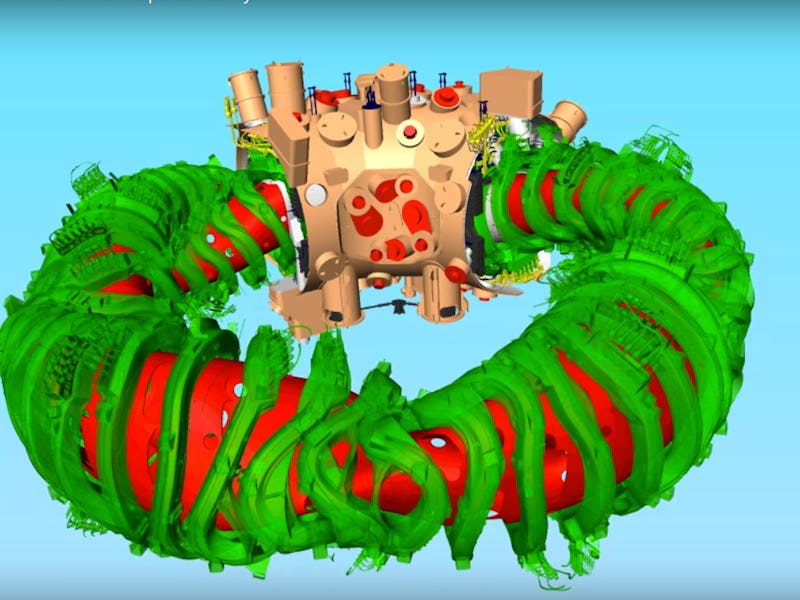Germany Just Injected New Hope Into the Nuclear Fusion Power Dream
Scientists are working to harness the power of an Earth-bound sun. If it works, clean fusion power could provide all the energy humans could ask for.

German scientists successfully contained a hydrogen plasma on Wednesday, bringing the world a step closer to the utopian dream of nuclear fusion power.
Federal Chancellor Angela Merkel pushed the red button on the Wendelstein 7-X stellarator, or W7-X, and kicked off a reaction countdown that heated up hydrogen with the power of 6,000 microwaves. The plasma was sustained for just a fraction of a second. The experiment was heralded as a success.
Nuclear fusion is the opposite reaction to the fission that powers today’s nuclear plants. While fission reactors break apart heavy uranium atoms and capture the energy released through that process, fusion power involves crashing two lighter atoms and forming a single, heavier one.
Hydrogen fusion is what powers the sun and the stars. Building a fusion power plant here on Earth is equivalent to making a tiny sun and containing it on our world. Which is an extremely difficult task, since without the crushing pressures caused by sheer mass of the stars, temperatures needed to start the reaction on this planet would have to be many times hotter than those found at the center of the sun.
If harnessed, fusion could power the world many times over on a fuel of seawater, with no risk of nuclear meltdown and very little waste. It’s no wonder that goal has consumed so many global resources, despite such slow progress.
One international effort, known as ITER, has cost billions to date and has been plagued by frustration and delays. Once predicted to produce a plasma by 2016, that goal has been pushed down the road — maybe indefinitely.
“I now expect to devote my full professional career before seeing a decent plasma in ITER,” a physicist at the facility told The New Yorker .
The German initiative, located at the Max Planck Institute for Plasma Physics in Greifswald, shares the same goal as ITER: A stable, contained hydrogen fusion reaction. However, they are based on two different devices.
Fusion reactions involve the production of a superheated ionized gas, known as plasma. At millions of degrees Celsius, plasma is too hot to be contained by any material on Earth. The best ideas for how to contain this plasma involve circulating it in a donut shape inside a vacuum by powerful supercooled magnets. The two top designs for this device are the tokamak and the stellarator, see below:
The last of the five field-period modules of the stellarator experiment Wendelstein 7-X was installed at the end of 2011.
The tokamak, which is the basis for ITER, was first proposed by Soviet physicists in the 1950s. It is simpler in design than the stellarator, but much more complex in operation.
The stellarator, which featured in the German experiment, has a much more complicated design, and could not have been built without supercomputing power that only became available in the 1980s.
This week’s success in Germany is a signal that the stellarator is catching up to, and perhaps has even surpassed, the tokamak in the race to commercial nuclear fusion.
Germany’s W7-X cost $440 million. The project overall has cost more than a billion dollars over two decades. The goal is to ramp up the device so that it can sustain hydrogen fusion reactions for longer and longer, up to 30 minutes. The scientists involved hope that milestone will be reached by 2025.